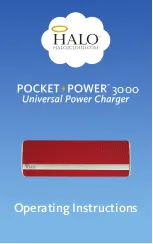
2 • EN
INTRODUCTION
Congratulations on purchasing your new CTEK professional switch mode battery charger. This charger is part of a range of
professional battery chargers from CTEK SWEDEN AB. It represents the latest technology in battery charging with charging
and analysis in eight steps with temperature compensation.
Read this User Manual and follow the instructions
carefully before using your new charger.
SAFETY
• The charger is designed for charging only batteries according to the
technical specification. Do not use the charger for any other purpose.
Always follow battery manufacturers’ user and safety recommendations.
• Never try to charge non-rechargeable batteries.
• Never place the charger on top of the battery or cover the charger
when charging.
• Never charge a frozen or damaged battery.
• Never charge a Li-battery with temperature below 0°C (32°F) if not
specified by the battery manufacturer.
• Never use a charger with damaged cables. Ensure that the cables have
not been damaged by hot surfaces, sharp edges or in any other way.
• Never place a fan-cooled charger so that dust, dirt or similar can be
sucked into the fan.
• A damaged cable must be replaced by a CTEK representative using an
original part supplied by CTEK. A detachable cable can be replaced by
the user using an original part supplied by CTEK.
• Connection to the mains supply must be in accordance with the national
regulations for electrical installations.
• Chargers with grounded mains plug must only be connected to a
grounded socket outlet.
• During charging, Lead-Acid batteries could emit explosive gases. Pre-
vent sparks close to the battery. Provide for good ventilation.
• Chargers with IP-class lower than IPx4 are designed for indoor use. See
technical specification. Do not expose to rain or snow.
• Connect the charger to the battery´s positive pole and then to the neg-
ative pole. For batteries mounted inside a vehicle, connect the negative
connection to the vehicle chassis remote from the fuel pipe. Then con-
nect the charger to mains supply.
• Disconnect the charger from the mains supply. Next remove the nega-
tive connection (vehicle chassis) and then the positive connection.
• Don’t leave any battery unattended for a longer period of time during
charging. If any error occurs disconnect the charger manually.
•
(IEC 7.12 ed.5)
This appliance is not intended for use by persons
(including children) with reduced physical, sensory or mental capabili-
ties, or lack of experience and knowledge, unless they have been given


























